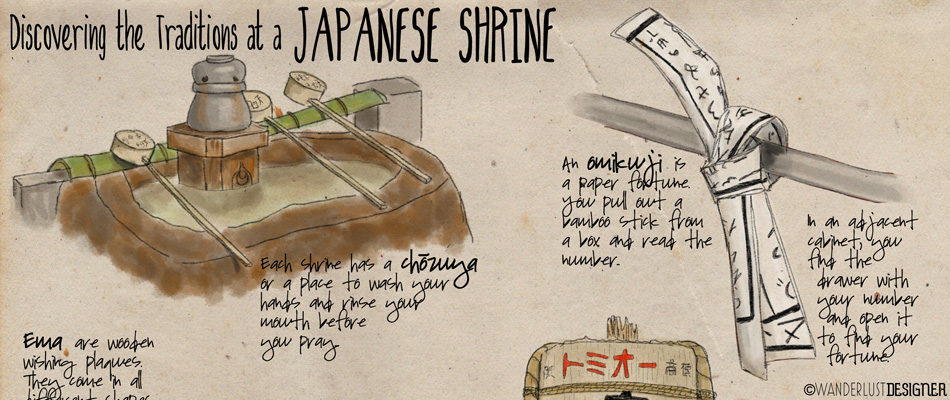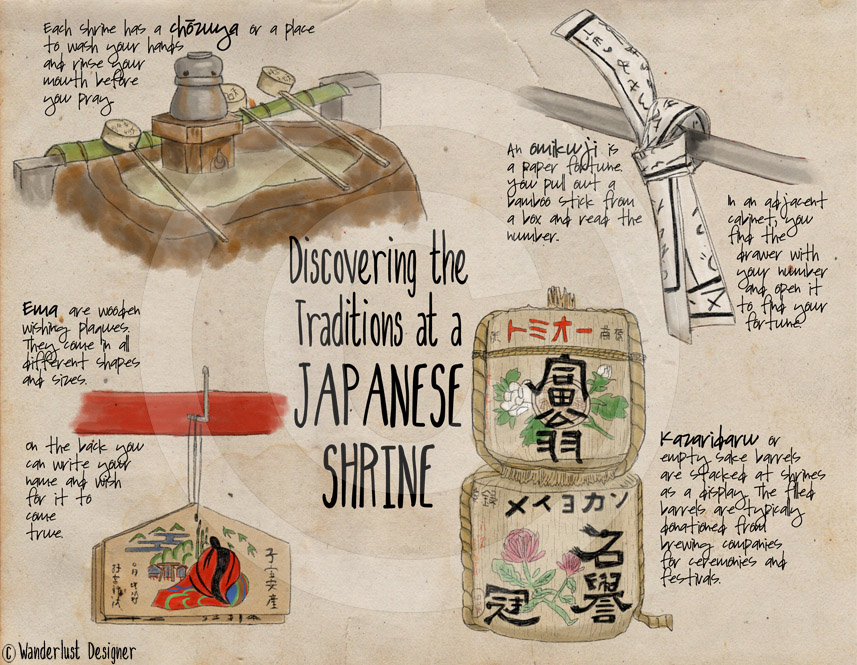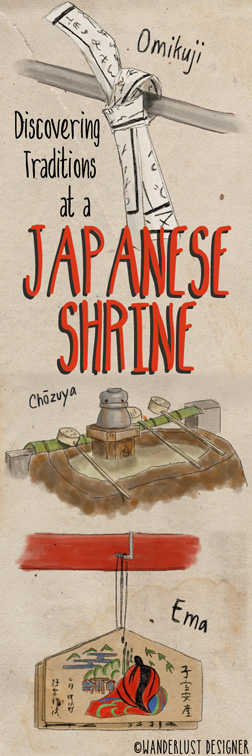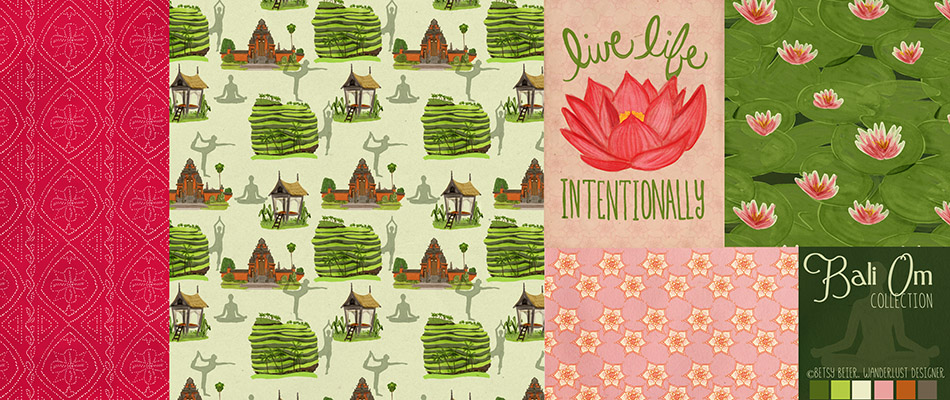Culture: Spiritual – Discovering Traditions at a Shinto Shrine in Japan

Like many travelers, I find one of the best parts about exploring a new country is learning something new. Experiencing new traditions, religions, ceremonies, and rituals can not only be educational but also a perfect way to reflect on my own culture’s traditions and perhaps bring some new insight home with me.
Before traveling to Japan, I did not know anything about the indigenous Shinto religion, the largest religion in Japan practiced by nearly 80% of the population. I was aware of the many shrines I was told to visit, but did not know of the varied rituals that take place within a Shinto shrine (jinja.)
Fortunately, I was lucky to be toured through some of these Shrines with some long time Japanese friends who live in Tokyo. They were more than happy to share the traditions and explain the meanings. Here are a few traditions I learned about.

Chōzuya (also Chōzu) – A chōzuya is a water purification area usually located near the entrance of the shrine. Worshippers come here to clean their hands and mouth before approaching the main shrine.
Ema – Throughout the shrines of Japan, you will find brightly painted and designed wooden Ema. Ema are wooden wishing plaques. They come in all different sizes as well as various shapes. For instance, at the famous Fushimi Inari Taisha in Kyoto (the shrine with hundreds of torii gates climbing the mountain side), the ema are in the shape of small torii gates. Typically there is an area at the shrine to buy an ema, then write a short wish on the back. The ema is then hung on hook along with hundreds of other ema, and left behind to hope the wishes come true.
Omikuji – This shrine ritual seems somewhat like an ancient game to retrieve your fortune. At most shrines you will find an area where you see a wooden container filled with bamboo sticks. Each stick has a number on it that corresponds to a number on a drawer of a large cabinet (reminiscent of an old library card catalog.) The drawer with your number contains small paper fortunes in it. The paper fortune can range from daikichi (good luck) to daikyo (bad luck). Once you have read your fortune, you tie it to an adjacent tree branch or wire, to send the fortune to the kami (gods) to either have it come true, or to have the bad fortune averted.
Kazaridaru – Many shrines will have an area where a wall of large sake barrels, kazaridaru, have been arranged. The stack of barrels with their sometimes ornate designs can make quite a beautiful display. Why, though, is there so much sake at a shrine? These barrels, sakedaru, signify the connection and/or relationship between the sake brewers and shrine. Most brewers donate these barrels to the shrine for ceremonies, festivals and rituals. Japanese believe that sake acts as a symbolic unification between the kami (gods) and people.



